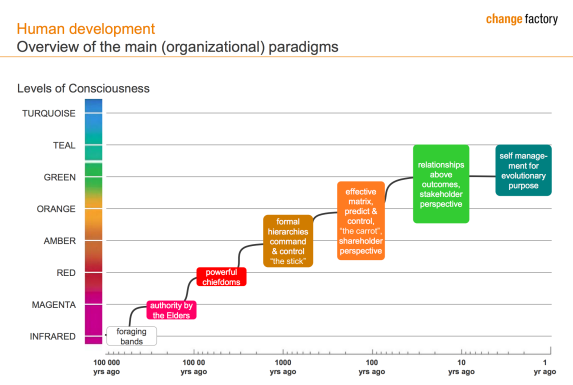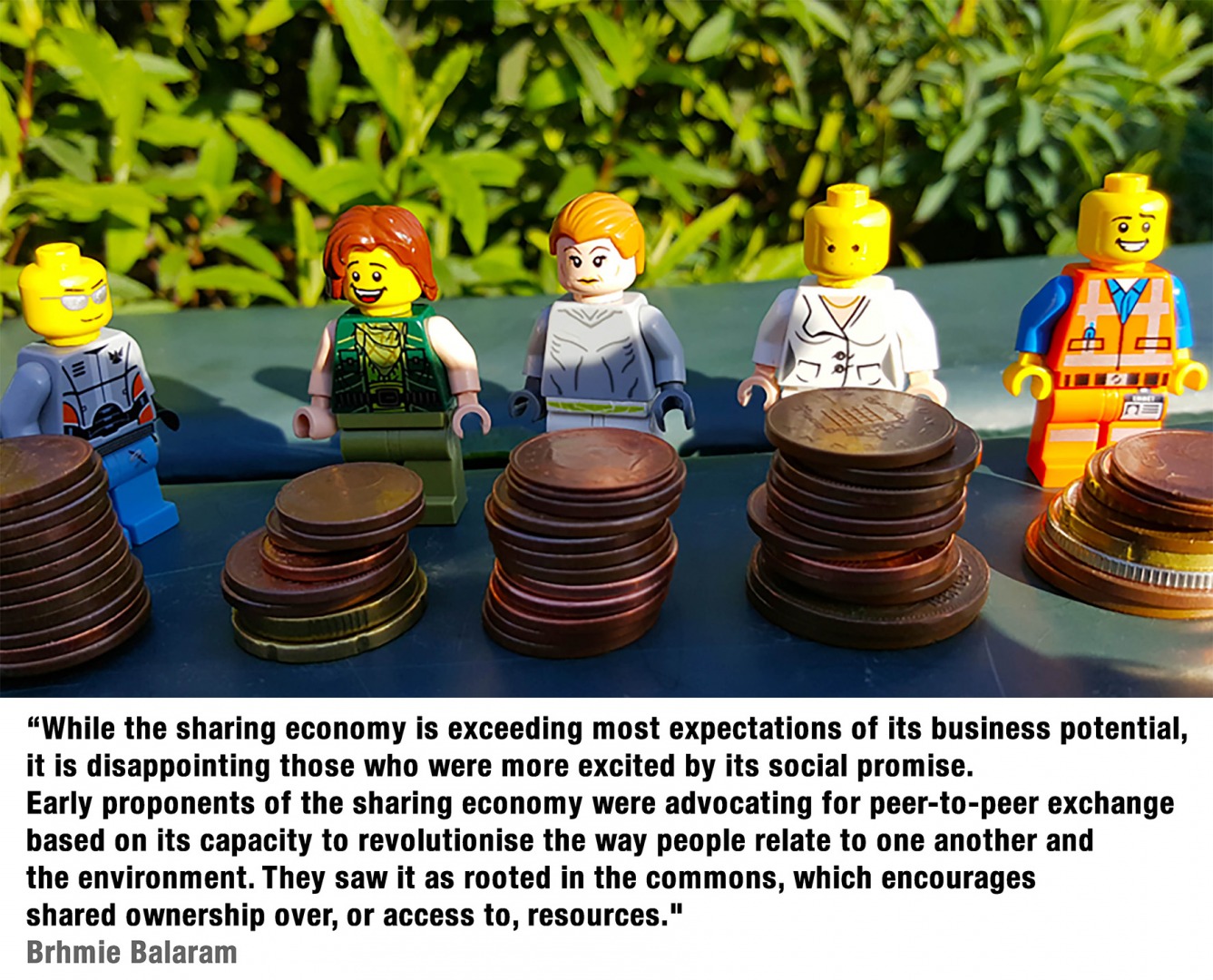
There is a revolution out there subtly infiltrating our world, our companies, our selves. It has to do with work. Work is changing and in its process of transformation its transforming individuals, companies and the economy in general. What are the novel characteristics of work that are so revolutionary?
In order to understand this I will tell you about a very original company: Buurtzorg.
Trust, Self-Management and Community Nursing
In 2006, nurse Jos de Blok was tired of the way community nursing operated in The Netherlands because of the quality of the health care provided. Fed up with a mechanistic management that focused in tight schedules (say: 3 minutes to give a shot, 4 to change a bandage, 7 to drive a few miles from one patient’s house to the other) community nurses had to face displeased patients on a daily basis. These were forced to deal with multiple caregivers doing individual tasks, while higher-educated nurses grew increasingly frustrated, unable to properly carry out their work.
Jos de Block decided to do something about it, and in 2006 found his own company, Buurtzorg, which in English means “Neighborhood Care”. Buurtzorg was so successful that in a decade it grew from being a small group of 5 nurses, to a company made of 580 teams of 6,500 nurses (in 2013) . Each team is helped by a back off office of around 35 people using an innovative IT system. Buurtzorg has grown to serve 50,000 patients without a single complaint and with revenue of more than € 180 million euro.
What Made Buurtzorg Such A Successful Company?
Buurtzorg revolutionized the way nursing is done in the Netherlands with a striking innovation, its organizational model. It’s management is actually based on old principles of primary health care: skilled nurses working together in a team of no more than 12, in a neighbourhood of 10,000 people, caring for all kinds of patients.
The innovation of Buurtzorg has to do with self-management. Its teams are responsible for the patients and have the autonomy to deliver the best possible care. The organization has low overhead costs, and so, money can be spent on the patients and their nurses, that for the most part, self-manage themselves.
External research has confirmed the Buurtzorg model to be very successful not only in terms of costs but in terms of the quality of care provided. Nivel, the Netherlands Institute for Health Services Research, did a study in 2009, that referred how Buurtzorg had the highest satisfaction rates among patients anywhere in the country. Another study, done by Ernst & Young in 2010, found that the average costs per client were 40% less than other homecare organizations, indicating a potential national savings of € 2 billion euro per year!
This drew the attention and support of the Prime Minister, the Dutch Health Ministry, patient organizations and others.Many politicians supported the model as a best practice and Buurtzoorg has been pointed out as an example of an outstanding organization.
The cherry in the cake though, came from the nurses, that in 2011 and 2012, awarded Buurtzorg the national Employer of the Year Award, as determined by employee surveys.
Re-inventing Organizations
Buurtzorg is cited as an example as an organization operating under a new and revolutionary management paradigm, according to Frederic Laloux’s book Re-inventing organizations. Laloux’s calls companies such as Buurtzorg a Teal Organization, because of their characteristics:
- Self-management
- Wholeness
- Evolutionary purpose
Laloux’s thought provoking proposal, is that a Teal organization operates at or near the TEAL stage of consciousness. Laloux’s scale of types of organizations, was inspired by the work of other thinkers such as Ken Wilber, Robert Kegan and Don Beck (who is a social psychologist that created the model Spiral Dynamics). By applying the models created by these developmental thinkers to his analysis of a number of companies, Laloux used colours to identify different kinds of organisations operating in different stages of consciousness.
For example, “orange” are those organisations that have a goal of beating the competition, using innovation and a meritocracy. Meanwhile “green” organisations are those that use culture and empowerment to encourage greater employee motivation, aiming to manage stakeholders more effectively. All stages correspond to an evolutionary leap forward, that makes them move from one to the next. As such, the TEAL stage of consciousness corresponds to the more advanced stages of psychological and spiritual development.

What has Buurtzorg to do with The Sharing Economy?
What is the striking resemblance of Buurtzorg with the sharing economy? And where do we find its strongest difference?
On a first basis it seems there is not much we can think of that connects these types of companies. If Buurtzorg is a non-for profit company, the most known sharing economy companies such as AirBnb, Uber and TaskRabbit are for profit. Plus their leadership is conventional, and their funding model is venture capital.
This is actually unfortunate, as the sharing economy initial promises were different, and closer to the peer to peer movement core values of sustainability, openness and solidarity. As Bhrime Balaram says, the writer of a recent report done by the RSA on the sharing economy:
“The movement began with locally-based, grassroots-funded initiatives such as tool libraries and timebanks, but now seems to be led by global, venture-backed corporations. While the sharing economy is exceeding most expectations of its business potential, it is disappointing those who were more excited by its social promise. Early proponents of the sharing economy were advocating for peer-to-peer exchange based on its capacity to revolutionise the way people relate to one another and the environment. They saw it as rooted in the commons, which encourages shared ownership over, or access to, resources. “
If one would apply Laloux’s management model to Airbnb or Uber’s core team, we would probably see how the orange colour has prevailed, due to its monopolistic drive to control their market share, which downsized its “green” initial premises. On the other hand, sharing economy companies are opening up the possibility of a world of cheap/nearly free abundant goods and information if… we dare to share stuff at close zero costs using the available network orchestrators.

Travelling the Tempestuous Sea of Two Mindsets: Scarcity and Abundance
What is the core issue then, is the clash of two drives. In his recent book “PostCapitalism,” Paul Mason eloquently addresses this by writing: “the main contradiction today is between the possibility of free, abundant goods and information; and a system of monopolies, banks and governments trying to keep things private, scarce and commercial.”
The “orange drive” taking over the sharing economy, is thus the one responsible for the most recent billionaires making it to the Forbes list: Travis Kalanick,from Uber and Brian Chesky the CEO of AirBnb. The bitter irony is that “us”, the crowd, are the ones funding these companies. As Brhmie Balaram highlights it in a recent paper published by the RSA, sharing economy is crowdfunded capitalism.
There is though something strikingly different about these companies which honours their name: they depend on their users things and on something else. There is then, a sound similarity between sharing economy companies and Buurtzorg, a teal organization: Self-management.
Work 2.0 ? Self-Management, The Sharing Economy And The Future Of Work Part 2

Maria Fonseca is the Editor and Infographic Artist for IntelligentHQ. She is also a thought leader writing about social innovation, sharing economy, social business, and the commons. Aside her work for IntelligentHQ, Maria Fonseca is a visual artist and filmmaker that has exhibited widely in international events such as Manifesta 5, Sao Paulo Biennial, Photo Espana, Moderna Museet in Stockholm, Joshibi University and many others. She concluded her PhD on essayistic filmmaking , taken at University of Westminster in London and is preparing her post doc that will explore the links between creativity and the sharing economy.



























